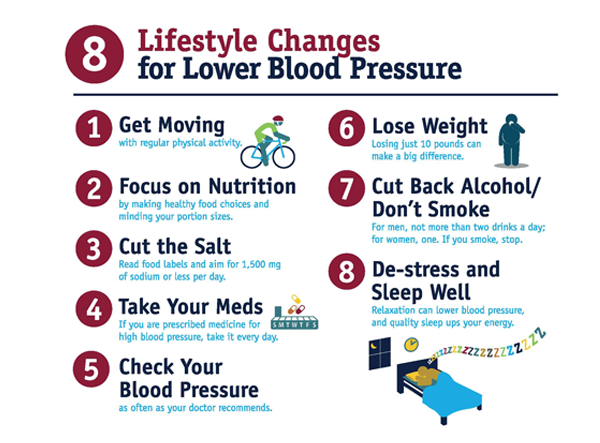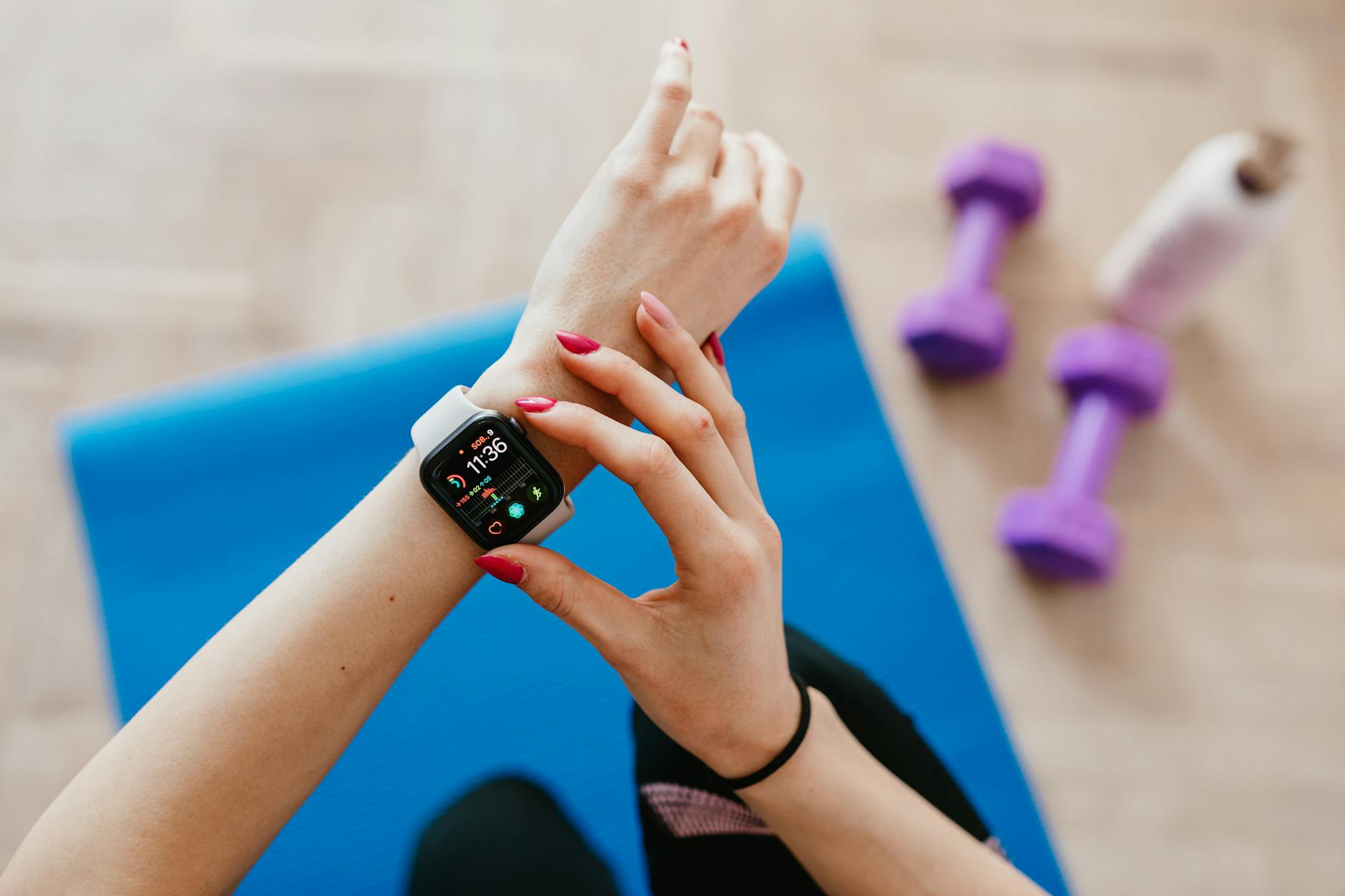Discover the secrets to lowering your blood pressure naturally with these surprising lifestyle tips that will leave you feeling empowered.
Table of Contents
- Introduction to ‘Beat High BP with Lifestyle Tips’
- Understanding Blood Pressure
- Diet and Blood Pressure
- The Power of Exercise
- Managing Stress for a Healthier Heart
- The Role of Magnesium
- Cutting Out Bad Habits
- Spotting High Blood Pressure
- Putting It All Together
- Conclusion: Stay Healthy and Active
- FAQs About High Blood Pressure
Introduction to ‘Beat High BP with Lifestyle Tips’
In this section, we will talk about the importance of managing high blood pressure and how making some changes in your daily life can help. So, let’s dive in and learn more about how you can keep your blood pressure under control with lifestyle tips.
Understanding Blood Pressure
Have you ever wondered what blood pressure is? It’s a measure of the force your blood puts on the walls of your blood vessels as it moves through your body. This measurement is essential because it helps doctors understand how well your heart is working and if there might be any health concerns.
The Effects of High Blood Pressure
When your blood pressure is too high, it can put extra strain on your heart and arteries, leading to serious health problems like heart disease, stroke, and kidney issues. That’s why it’s crucial to keep your blood pressure at a healthy level by making smart choices in your daily life.
Diet and Blood Pressure
In addition to exercise and stress management, what you eat plays a crucial role in controlling your blood pressure. Certain foods can help lower your blood pressure levels and keep your heart healthy.

Image courtesy of www.mcdaidpharmacy.ie via Google Images
Omega 3 and Blood Pressure
Omega 3 is a type of healthy fat that has been shown to have significant benefits for heart health, including lowering blood pressure. You can find omega 3 in foods like fatty fish such as salmon, mackerel, and trout. Eating these fish a couple of times a week can help keep your blood pressure in check.
LDL Cholesterol and Blood Pressure
LDL cholesterol, also known as ‘bad’ cholesterol, can clog your arteries and increase your risk of high blood pressure. To keep your blood pressure healthy, it’s essential to limit foods high in LDL cholesterol, such as fried foods, processed foods, and sugary snacks. Instead, focus on eating whole foods like fruits, vegetables, whole grains, and lean protein to support a healthy heart.
The Power of Exercise
In addition to making healthy food choices, staying active is another key ingredient in helping to lower high blood pressure. Exercise can be a fun and effective way to keep your body strong and your blood pressure in check.
Activities to Lower Blood Pressure
When it comes to exercise, you don’t need to run a marathon or lift heavy weights to reap the benefits. Simple activities can make a big difference in managing your blood pressure. Try incorporating these exercises into your daily routine:
1. Jumping jacks: A fun and easy way to get your heart pumping and improve circulation.
2. Swimming: Not only is swimming a great workout, but it’s also gentle on the joints.
3. Dancing: Put on your favorite music and dance around your room to get your body moving.
4. Yoga: Relaxing and stress-reducing, yoga can help lower blood pressure over time.
5. Walking: A brisk walk around the neighborhood or park can be a great way to stay active.
Remember, it’s important to find activities that you enjoy so that you’ll be more likely to stick with them. Whether it’s playing tag with friends, shooting hoops, or riding your bike, find something that gets you moving and brings you joy.
Managing Stress for a Healthier Heart
In order to keep your blood pressure at a healthy level, it’s important to learn how to manage stress. Stress can have a negative impact on your heart health, so finding ways to relax is crucial.

Image courtesy of www.thecardiologyadvisor.com via Google Images
Relaxation Techniques
There are several simple and effective ways to relax and reduce stress, which can help keep your blood pressure normal. One method is deep breathing exercises. Taking slow, deep breaths can help calm your mind and body, lowering your stress levels. You can also try practicing mindfulness by focusing on the present moment and letting go of worries about the future.
Another way to relax is by engaging in activities you enjoy, such as drawing, listening to music, or playing outside. Physical activity is also a great way to reduce stress and improve your overall health. Whether it’s riding a bike, playing a sport, or simply going for a walk, being active can help you unwind and feel better.
Additionally, making time for relaxation and self-care is important. Set aside a few minutes each day to do something that helps you unwind, whether it’s reading a book, taking a bath, or spending time with a pet. Finding what works best for you and incorporating it into your routine can make a big difference in managing stress and maintaining a healthy heart.
The Role of Magnesium
Have you ever heard of magnesium? No, it’s not a fancy magic potion! Magnesium is actually a mineral that can play a significant role in keeping your blood pressure in check. Let’s dive into how magnesium benefits your body.
Finding Magnesium in Foods
Magnesium can be found in various foods that you might already enjoy. Foods like nuts, seeds, leafy greens, and whole grains are rich sources of magnesium. So, if you love snacking on almonds or munching on spinach, you’re already getting a dose of this beneficial mineral!
| Lifestyle Tips to Beat High Blood Pressure |
|---|
|
1. Eat a Healthy Diet Include plenty of fruits, vegetables, whole grains, and lean proteins in your diet. Limit salt, saturated fats, processed foods, and sugary drinks. |
|
2. Get Regular Exercise Engage in moderate exercise for at least 30 minutes a day. This can help lower blood pressure and improve overall cardiovascular health. |
|
3. Manage Stress Practice stress-reducing techniques such as yoga, meditation, deep breathing, or spending time in nature. |
|
4. Maintain a Healthy Weight Being overweight or obese can increase the risk of high blood pressure. Aim for a healthy weight through diet and exercise. |
|
5. Limit Alcohol and Quit Smoking Excessive alcohol consumption and smoking can raise blood pressure. Limit alcohol intake and quit smoking to improve your heart health. |
Cutting Out Bad Habits
In order to keep your blood pressure at a healthy level, it’s essential to understand the habits that might increase it. By cutting out these bad habits, you can help maintain a healthy blood pressure level.

Image courtesy of www.nhlbi.nih.gov via Google Images
Habits to Avoid
One common bad habit that can lead to high blood pressure is consuming too much salt. Salt contains sodium, which can cause your body to retain water and increase blood pressure. Instead of adding salt to your meals, try using herbs and spices to add flavor.
Another habit to steer clear of is smoking. Smoking can damage your blood vessels and raise your blood pressure. If you don’t smoke, don’t start. And if you do smoke, talk to a trusted adult about ways to quit that best suit you.
Being inactive and not getting enough exercise can also contribute to high blood pressure. Aim to be active for at least 60 minutes every day. This could include activities like playing outside, riding your bike, or joining a sports team.
Lastly, eating too many unhealthy foods, like fast food and sugary snacks, can impact your blood pressure. Instead, focus on eating a balanced diet with plenty of fruits, vegetables, whole grains, and lean proteins.
Spotting High Blood Pressure
One way to keep your body healthy is by making sure your blood pressure is at the right level. But how can you tell if your blood pressure might be too high without using a special cuff? Let’s look at some warning signs that could indicate high blood pressure, like lower back pain.
Warning Signs of High Blood Pressure
If you start feeling pain in your lower back that doesn’t go away, it could be a sign that your blood pressure is too high. Sometimes, high blood pressure can put extra strain on your heart and blood vessels, causing discomfort in different parts of your body, like your back.
Other indicators of high blood pressure can include headaches, dizziness, blurred vision, and shortness of breath. If you notice any of these symptoms, it’s important to talk to a grown-up so they can help you see a doctor.
Putting It All Together
Now that we’ve learned about how lifestyle changes can help manage high blood pressure, let’s put it all together into a daily routine that can make a big difference.

Image courtesy of dailyinfographic.com via Google Images
Start your day with a healthy breakfast that includes foods rich in omega 3 fatty acids like nuts, seeds, or fish. These can help keep your blood pressure in check.
Throughout the day, make sure to stay active. You can go for a bike ride, play sports with friends, or even just dance around your room. All these activities can help lower your blood pressure.
Incorporate relaxation techniques into your daily routine. Whether it’s deep breathing exercises, yoga, or simply taking a few minutes to unwind, reducing stress can have a positive impact on your blood pressure.
Don’t forget to include magnesium-rich foods in your meals. Foods like spinach, bananas, and avocado are great sources of magnesium that can benefit your blood pressure levels.
Avoid unhealthy habits like eating too much junk food or spending too much time in front of screens. Instead, opt for healthier alternatives like snacking on fruits or taking breaks to go outside and play.
By following these simple tips and making small changes to your daily routine, you can create a blood pressure-friendly lifestyle that will help you stay healthy and active.
Conclusion: Stay Healthy and Active
In conclusion, it’s essential to understand the importance of keeping your blood pressure at a healthy level. By adopting simple lifestyle changes and healthy habits, you can significantly lower your risk of developing high blood pressure and its associated complications.
Remember, staying active is key to maintaining a healthy blood pressure. Whether it’s playing sports, going for a bike ride, or simply taking a walk with friends, engaging in regular physical activity can make a big difference in keeping your blood pressure in check.
Additionally, incorporating omega-3-rich foods like fish, walnuts, and flaxseeds into your diet can help lower blood pressure levels. These foods not only taste good but also provide essential nutrients that are beneficial for your heart health.
Reducing stress through relaxation techniques such as deep breathing, meditation, or yoga can also have a positive impact on your blood pressure. Finding ways to relax and unwind can help your body and mind stay calm and balanced.
Furthermore, be mindful of your magnesium intake by including foods like spinach, almonds, and avocado in your meals. Magnesium plays a vital role in regulating blood pressure and keeping your heart healthy.
Lastly, avoid unhealthy habits like excessive salt intake, smoking, and a sedentary lifestyle, as they can contribute to high blood pressure. Instead, opt for healthier alternatives that promote overall well-being and lower your risk of developing hypertension.
By integrating these lifestyle tips and habits into your daily routine, you can create a blood pressure-friendly lifestyle that will not only benefit your heart health but also improve your overall quality of life. Stay healthy, stay active, and take charge of your well-being!
FAQs About High Blood Pressure
What Causes High Blood Pressure?
High blood pressure, also known as hypertension, can be caused by a variety of factors. It can be influenced by genetics, meaning it may run in families. Consuming too much salt, not being active enough, being overweight, and stress can also contribute to high blood pressure. As kids, it’s important to eat healthy foods, stay active, and manage stress to help prevent high blood pressure.
Can Kids Get High Blood Pressure?
Yes! While it’s more common in adults, kids can also have high blood pressure. This might happen if they are overweight, have certain medical conditions, or a family history of high blood pressure. By maintaining a healthy lifestyle with proper diet and exercise, kids can keep their blood pressure at a normal level.
How Do Doctors Check for High Blood Pressure?
Checking for high blood pressure is a simple and painless process. A doctor or nurse will use a blood pressure cuff, also known as a sphygmomanometer, to measure your blood pressure. They will wrap the cuff around your arm and inflate it to check how hard your blood is pushing against the walls of your arteries. The results are displayed as two numbers, with the top number representing the pressure when your heart beats and the bottom number showing the pressure when your heart is at rest. It’s a quick and easy way for doctors to make sure your blood pressure is in a healthy range!





